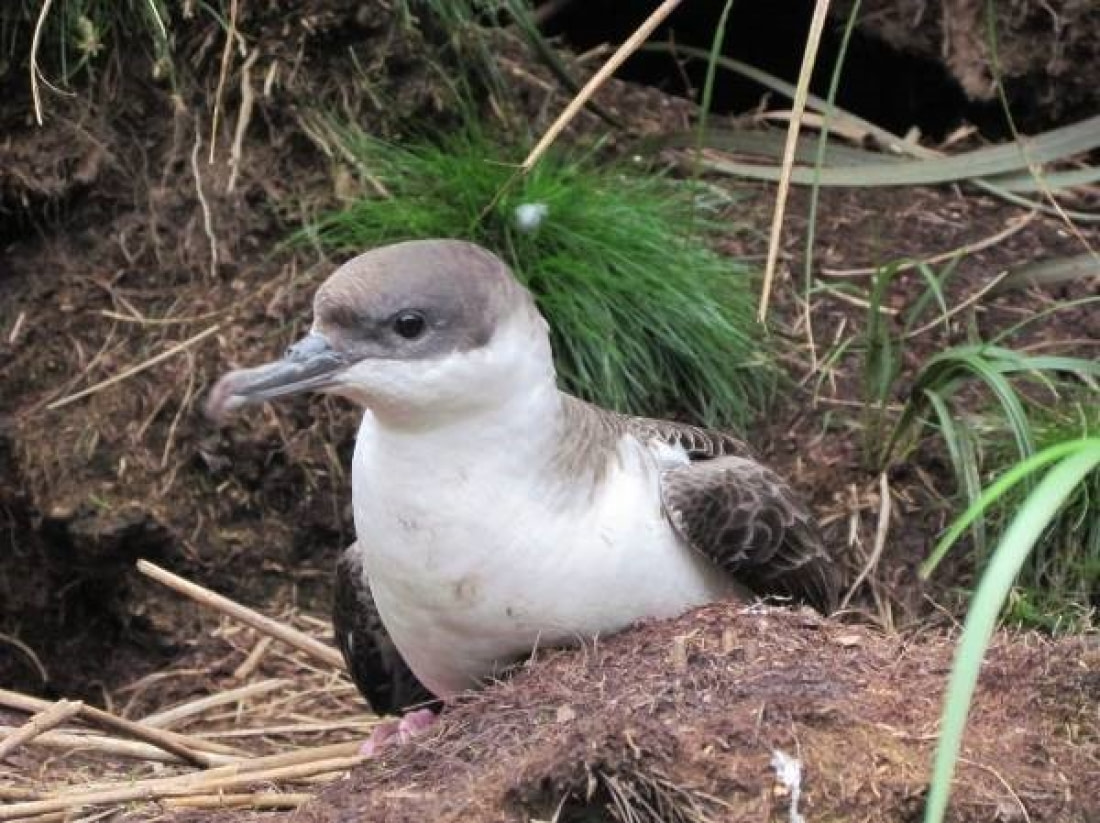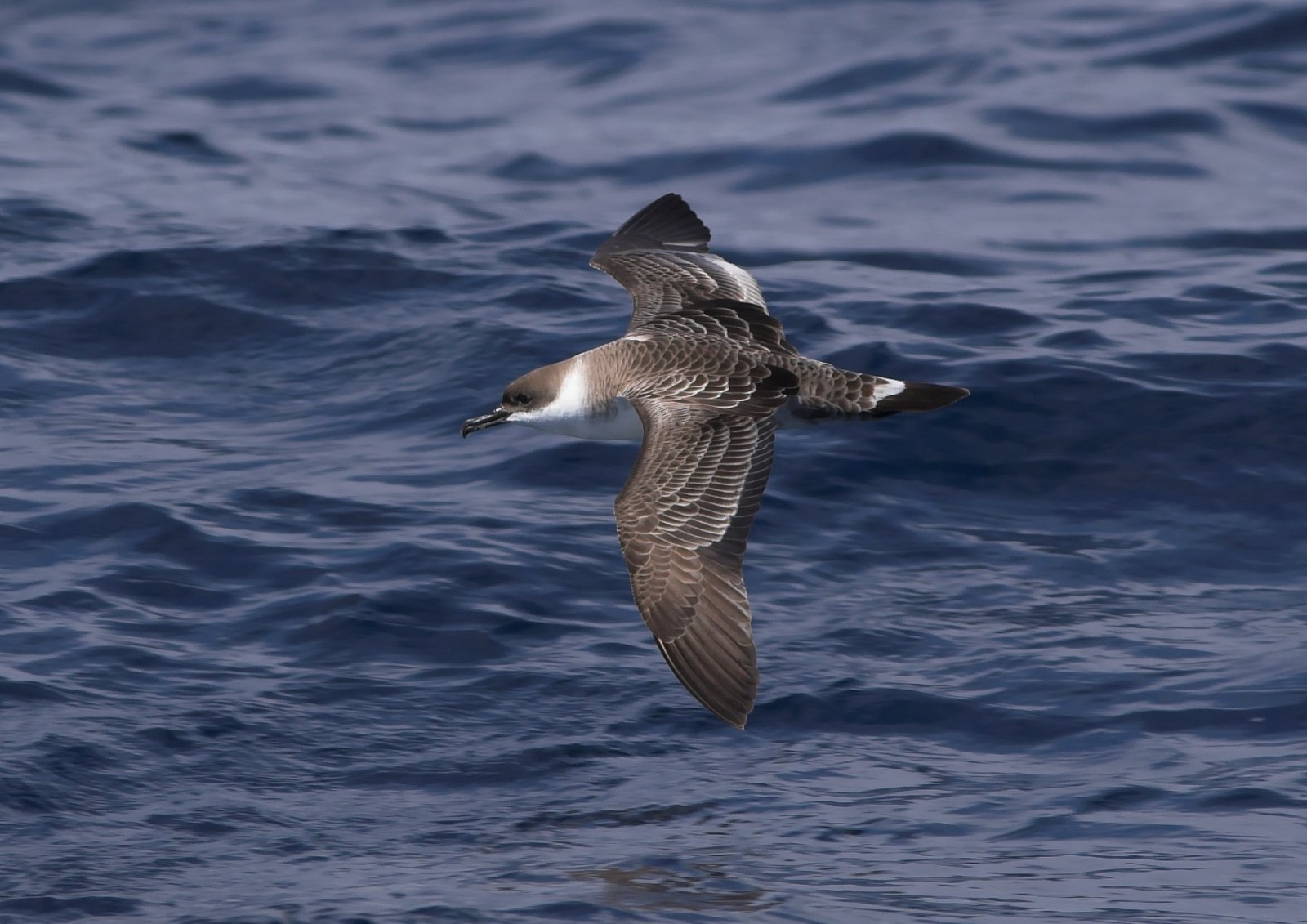Name: Shearwater. Note - "Shearwater" encompasses 6 genera and 37 species.
Length: 35 to 65 cm, depending on species.
Weight: Varies by species.
Location: Temperate and cold waters, depending on species.
Conservation status: Varies by species.
Diet: Fish, squid.
Appearance: Varies by species. Typically have long tails.
How do Shearwaters feed?
Shearwaters are primarily divers, reaching depths of up to 70 meters. They often follow fishing vessels for scraps and whales that drive prey to the surface.
Are Shearwaters social?
Shearwaters gather in large flocks to feed and migrate, forming breeding colonies that can number in the hundreds of thousands.
How fast do Shearwaters fly?
Flight speed varies by species. For instance, the Manx Shearwater flies at about 55 km per hour.

What are Shearwater birthing rituals like?
Shearwaters nest on islands and coastal cliffs to avoid predators, becoming nocturnal and feeding mainly on moonless nights. They nest in burrows, laying one egg, with both parents sharing incubation and rearing duties.
How long do Shearwaters live?
Shearwaters are long-lived birds, with the longest recorded lifespan being at least 55 years.
How many Shearwaters are there today?
The global Shearwater population is in the millions, though some species are endangered with populations in the low tens of thousands.
Do Shearwaters have any natural predators?
Predators vary by species and location. For example, Townshend's Shearwaters on Socorro Island are vulnerable to feral cats, while other species may face threats from rats, falcons, goats, or pigs.
7 Stunning Shearwater Facts
- The name "Shearwater" comes from their flight style of shearing across wave fronts with stiff wings.
- Sooty Shearwaters migrate up to 64,000 km annually, the longest recorded migration of any animal.
- The Shearwater genera are:
- Bulweria
- Calonectris
- Lugensa
- Procellaria
- Pseudobulweria
- Puffinus
- Shearwater species by genera include:
- Bulweria
- Bulweria bifax - Small St. Helena Petrel
- Bulweria bulwerii - Bulwer's Petrel
- Bulweria fallax - Jouanin's Petrel
- Calonectris
- Calonectris diomedea - Cory's Shearwater
- Calonectris edwardsii - Cape Verde Shearwater
- Calonectris leucomelas - Streaked Shearwater
- Lugensa
- Lugensa brevirostris - Kerguelen Petrel
- Procellaria
- Procellaria aequinoctialis - White-chinned Petrel
- Procellaria cinerea - Grey Petrel
- Procellaria conspicillata - Spectacled Petrel
- Procellaria parkinsoni - Black Petrel
- Procellaria westlandica - Westland Petrel
- Pseudobulweria
- Pseudobulweria aterrima - Mascarene Petrel
- Pseudobulweria becki - Beck's Petrel
- Pseudobulweria macgillivrayi - Fiji Petrel
- Pseudobulweria rostrate - Tahiti Petrel
- Puffinus
- Puffinus assimilis - Little Shearwater
- Puffinus auriculatus - Townsend's Shearwater
- Puffinus bryani - Bryan's Shearwater
- Puffinus bulleri - Buller's Shearwater
- Puffinus carneipes - Flesh-footed Shearwater
- Puffinus creatopus - Pink-footed Shearwater
- Puffinus gavial - Fluttering Shearwater
- Puffinus gravis - Great Shearwater a.k.a. Hagdown
- Puffinus griseus - Sooty Shearwater
- Puffinus heinrothi - Heinroth's Shearwater
- Puffinus huttoni - Hutton's Shearwater
- Puffinus lherminieri - Audubon's Shearwater
- (Debate exists on whether the following are subspecies of Puffinus lherminieri):
- Puffinus (lherminieri) bailloni - Tropical Shearwater a.k.a. Baillon's Shearwater
- Puffinus (lherminieri) bannermani - Bannerman's Shearwater
- Puffinus (lherminieri) baroli - Barolo Shearwater a.k.a Macronesian Shearwater
- Puffinus (lherminieri) boydi - Boyd's Shearwater
- Puffinus (lherminieri) persicus - Persian Shearwater
- Puffinus mauretanicus - Balearic Shearwater
- Puffinus nativatis - Christmas Shearwater
- Puffinus newelli - Newell's Shearwater a.k.a. Hawaiian Shearwater
- Puffinus olsoni - Lava Shearwater a.k.a. Olson's Shearwater (extinct)
- Puffinus opisthomelas - Black-vented Shearwater
- Puffinus pacificus - Wedge-tailed Shearwater
- Puffinus puffinus - Manx Shearwater
- Puffinus subalaris - Galápagos Shearwater
- Puffinus tenuirostris - Short-tailed Shearwater a.k.a. Mutton Bird
- Puffinus yelkouan - Yelkouan Shearwater
- Bulweria
- Shearwaters are not well-adapted to moving on land due to their body configuration and foot placement.
- Much about Shearwaters remains unknown due to their pelagic lifestyle and extensive migrations.
- Shearwater classification is ongoing. In 2011, Bryan's Shearwater was identified as a new species in a museum collection, the first new bird identified in the U.S. in 37 years.






 11 Days / 10 Nights
11 Days / 10 Nights
